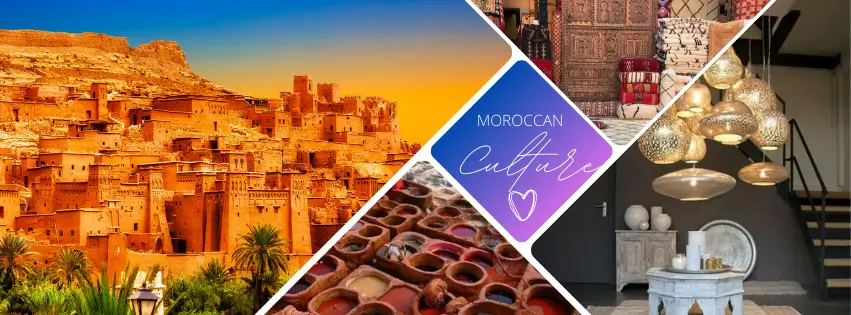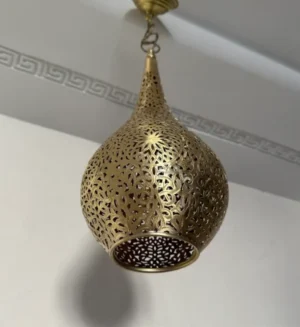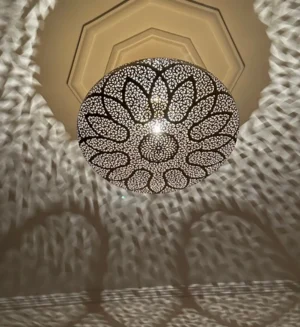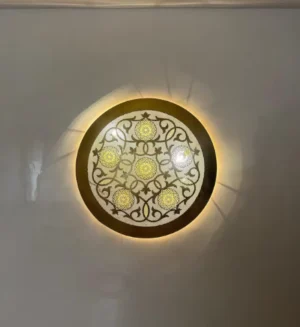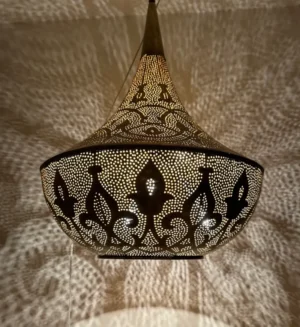Morocco is a vibrant mix of cultures, blending North African traditions with artistic innovation. Its rich heritage shows a mix of Berber, Arab, and Islamic influences. This creates a unique art scene that draws people from all over.
Traditional crafts in Morocco tell powerful stories. Islamic art metalwork and delicate textiles show deep connections to family and place. Artisans turn simple materials into symbols of cultural memory.
Morocco’s art combines history and new ideas. Craftspeople keep old techniques alive while adding modern touches. This keeps their traditions fresh and interesting in today’s world.
Every handmade piece in Morocco has a story to tell. The country values its heritage through careful craftsmanship. This shows respect for tradition and a skill in sharing stories through art and touch.
The Rich Heritage of Moroccan Culture
Morocco is a vibrant mix of cultures. Ancient Berber traditions meet Arab and Andalusian influences here. This blend of cultures has shaped the nation’s identity over centuries.
Ancient Roots and Islamic Influences
The Berber culture is at the heart of Moroccan heritage. It existed long before Arabs arrived in the 7th century. The Arabs brought Islamic traditions that changed the region’s culture and learning.
- Berber tribes kept their own language and customs
- Islamic scholarship thrived in cities like Fez
- Arabic became the main language of government
Cultural Diversity Across Regions
Morocco’s varied landscapes add to its cultural richness. From the Rif Mountains to the Sahara, each area has its own traditions. The Andalusian influence is strong in coastal and city areas, showing ties to southern Spain.
Modern Preservation Efforts
Today, Morocco is dedicated to saving its cultural heritage. Museums, cultural centers, and government programs work hard to protect it. Traditional crafts, music, and architecture are celebrated as links to the country’s rich history.
Traditional Moroccan Lamps: Artistry in Metal and Glass
Moroccan lanterns are a stunning mix of art and function. They show off Morocco’s rich culture with detailed metalwork and bright colored glass.
Brass lamps are made by skilled artisans. They turn raw metal into beautiful art. Old techniques help them create lamps that are both precise and lovely.
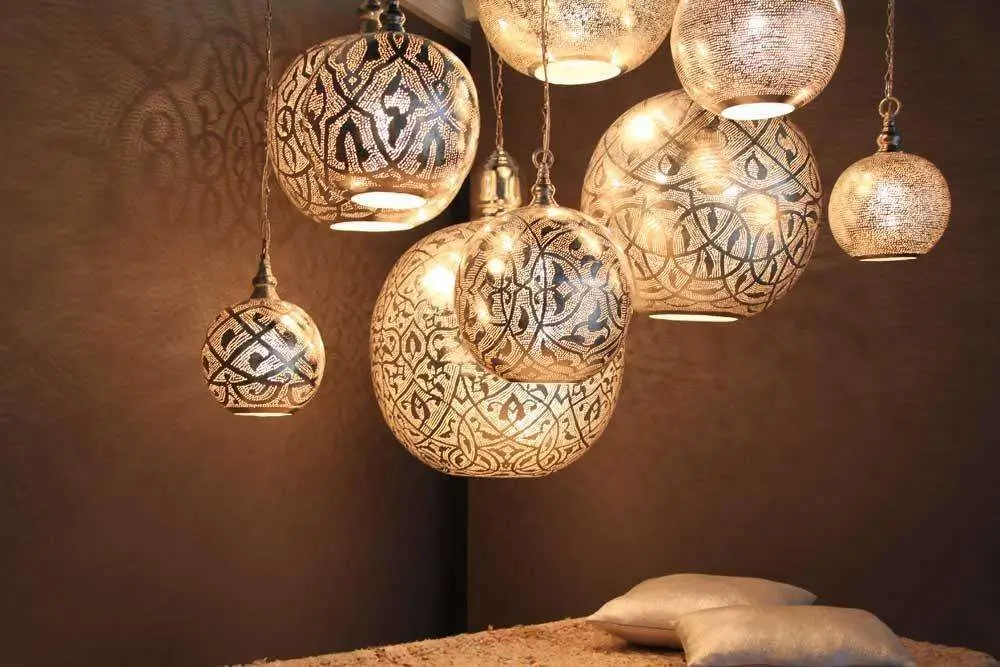
- Metalwork involves hand-hammering brass into delicate patterns
- Colored glass pieces are carefully selected and fitted into intricate designs
- Each lamp represents a unique cultural storytelling medium
These lamps have intricate designs. They feature geometric patterns and arabesque motifs, showing Islamic art traditions. The light through colored glass makes any room warm and welcoming.
Moroccan brass lamps are more than just lights. They are decorative pieces, cultural symbols, and signs of artistic greatness. They link modern design with ancient craftsmanship.
- Popular in luxury hotels and high-end interior design
- Sought after by collectors worldwide
- Represent a blend of functional art and cultural expression
The mix of metal and glass makes these lanterns true works of art. They show the skill of Moroccan artisans.
The Art of Moroccan Textiles and Weaving
Moroccan textiles are a colorful display of culture, with Berber weaving at its core. These detailed crafts share stories of past generations. They capture the rich diversity of Morocco’s cultural scene.
Berber Carpet Making Techniques
Berber carpet making is a tradition that has lasted for centuries. It turns raw wool into beautiful Moroccan rugs. Artisans use old methods like:
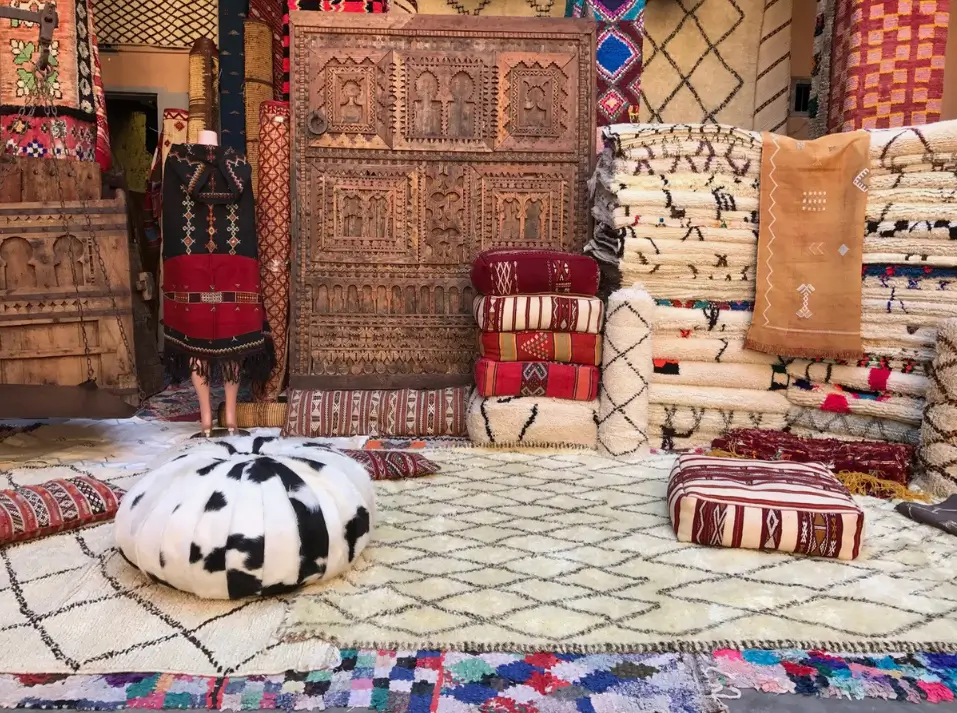
- Hand-spinning natural wool fibers
- Creating intricate geometric patterns
- Weaving on traditional vertical looms
- Using natural dyes from local plants
Symbolism in Pattern Design
Symbolism is key in Moroccan textile art. Each pattern holds deep cultural meaning. Geometric shapes and colors stand for:
- Tribal identity
- Spiritual beliefs
- Protection against evil
- Life experiences
Regional Textile Variations
Textiles vary across Morocco, showing different traditions. From the High Atlas Mountains to the coast, each place has its own weaving style. These styles reflect local culture and the environment.
Moroccan rugs are more than just decorations. They are historical records, telling stories of communities. They do this through detailed weaving and symbolic designs.
Architecture and Interior Design Elements
Moroccan architecture is a beautiful mix of culture and art. It turns homes into stunning sights with its detailed designs and techniques.
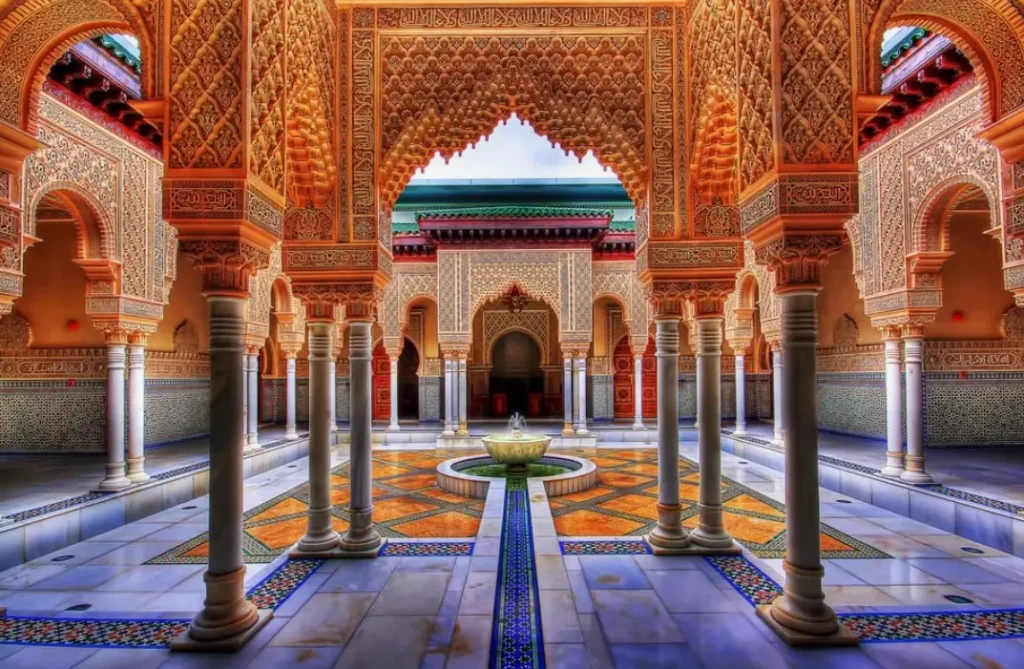
Riads, the famous Moroccan courtyard houses, are architectural wonders. They have:
- Inward-facing rooms around a central courtyard
- Ornate zellige tiles on walls and floors
- Intricate Islamic geometric patterns inside
- Detailed wooden carvings with fancy designs
Zellige tiles are key in Moroccan architecture. They turn simple surfaces into amazing art. These handmade ceramic tiles have complex designs that hold deep cultural meaning. Islamic geometric patterns add a sense of spiritual harmony and cosmic order.
The design focus is on creating calm, cozy spaces. Moroccan architects use natural materials like clay, stone, and wood. They create environments that feel luxurious and connected to traditional craftsmanship.
Key features of Moroccan design include:
- Symmetrical and balanced spaces
- Rich colors inspired by the desert
- Decorative elements that tell cultural stories
- Spaces for family and community
These design principles still inspire designers today. They show the lasting beauty of Moroccan style.
Moroccan Craftsmanship: From Souks to Global Markets
Moroccan artisan crafts link old skills to new economic chances. Moroccan souks are key places for cultural and economic exchange. They turn local crafts into a big deal in the global market.
Traditional Metalworking Methods
Metalworking in Morocco is a skill passed down through generations. Artisans in souks make detailed designs with methods unchanged for centuries. They use:
- Hammering copper and brass into delicate shapes
- Intricate engraving and decorative patterns
- Hand-casting metal using traditional molds
Contemporary Adaptations
Today, Moroccan crafts mix old techniques with new designs. Craftsmen update their skills for the global market. They make products that attract international buyers while keeping cultural traditions alive.
Export and Economic Development
Artisan crafts boost Morocco’s economy. The demand for Moroccan handmade goods grows, helping many workers. Export revenues from traditional crafts contribute substantially to the national economy. This shows how preserving culture and innovation can help the economy.
- Increased international demand for authentic handmade products
- Growing recognition of Moroccan craftsmanship worldwide
- Economic empowerment of local artisan communities
Preserving Cultural Heritage Through Modern Design
In Morocco, cultural preservation has seen a big change with new design ideas. Designers and artisans mix old skills with new styles. This mix makes sustainable crafts that people all over the world love. It keeps Moroccan culture alive and interesting today.
Modern Moroccan design is also boosting cultural tourism. It draws visitors from everywhere and helps local artists. People like Norya Ayron and Hassan Hajjaj are leading this change. They show how old crafts can be seen in new ways by people everywhere.
Now, saving cultural heritage goes beyond museums. It’s about using old crafts in new designs and buildings. Places like the Moroccan Crafts Foundation teach young people these skills. They also encourage new ways of using these traditions.
This blend of old and new tells a powerful story for cultural tourism. It highlights Morocco’s deep artistic history. By supporting these crafts and artists, we help keep traditions alive. We also create jobs in towns and cities all over Morocco.
FAQ
What makes Moroccan lamps unique?
Moroccan lamps stand out because of their detailed metalwork and bright glass designs. They often have complex geometric patterns. These patterns and the hand-crafted brass or copper frames create beautiful light and shadow effects.
How do Berber carpets reflect cultural heritage?
Berber carpets are more than just decorations. They tell stories of history and culture. Each pattern, color, and symbol holds a special meaning. These meanings are passed down through generations of Moroccan artisans.
What are the primary influences on Moroccan cultural design?
Moroccan design is a mix of Berber, Arab, Andalusian, and Islamic styles. It’s known for its complex patterns, bright colors, and detailed craftsmanship. This mix shows the country’s rich history and diverse influences.
How do traditional Moroccan crafts contribute to the economy?
Traditional crafts play a big role in the economy. They support local artisans and help with exports. Crafts like metalwork, textiles, and ceramics bring in a lot of money. This is through both local markets and international trade.
What techniques are used in Moroccan metalworking?
Moroccan metalworkers use old techniques like hand-hammering and precise shaping. They often use brass, copper, and silver. This creates beautiful items like lamps, trays, and architectural details.
How are Moroccan cultural traditions being preserved today?
Artisan support programs, museums, and cultural education help preserve traditions. These efforts ensure Morocco’s rich heritage stays alive and relevant today. Traditional crafts are also being used in modern designs.
What role do geometric patterns play in Moroccan design?
Geometric patterns are key in Moroccan design. They show mathematical precision, spiritual meaning, and beauty. These patterns are found in architecture, textiles, ceramics, and more. They reflect Islamic artistic values.
Are Moroccan crafts sustainable?
Yes, many Moroccan artisans are now using sustainable practices. They focus on local materials, traditional methods, and eco-friendly techniques. This helps reduce environmental impact while keeping cultural craftsmanship alive.

